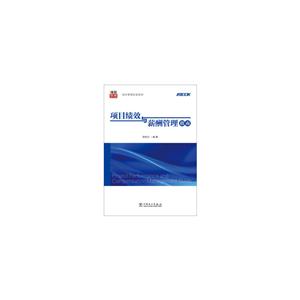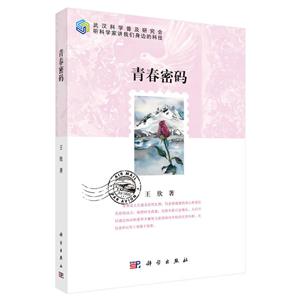全球能源互联网应对气候变化研究报告(英文版)

|
全球能源互联网应对气候变化研究报告(英文版)作者:GlobalEnergyIntercon 开 本:大16开 书号ISBN:9787519832223 定价:170.0 出版时间:2019-12-01 出版社:中国电力出版社 |
全球能源互联网应对气候变化研究报告(英文版) 本书特色
The Report consists of seven chapters. Chapter 1 describes the scientific facts and impacts of climate change and analyzes its status quo and actions as well as the key role of energy transition in addressing it. Climate service for energy is needed to support the transition to clean energy. This chapter is jointly written by WMO and GEIDCO. Chapter 2 explains the framework and theory of GEI mitigation and puts forward its mechanisms and pathways. Chapter 3 deals with the quantitative analysis of the characteristics and mitigation value of the GEI system by using a comprehensive assessment modelling framework in conjunction with energy system and power system optimization models. Chapter 4 focuses on the GEI mitigation technology portfolio, as well as the development trend and combined use of such technologies as clean replacement, electricity replacement, grid interconnection, energy efficiency enhancement, and carbon removal. Chapter 3 and 4 are jointly written by IIASA and GEIDCO. Chapter 5 studies and proposes key mitigation actions through energy interconnection in different continents based on their respective conditions of climate, resource endowment, and energy and power development. Chapter 6 analyzes the contribution of GEI to economy, society, climate, environment, health and sustainable development. Chapter 7 suggests some innovative mechanisms for addressing climate change, including linking mitigation targets with integrated policy instruments, mobilizing finance resources through the electricity-carbon market, accelerating major projects’ implementation by an innovative mode of “electricity, mining, metallurgy, industry and trade” and adopting new approaches for universal power access to enhance climate resilience.The Report consists of seven chapters. Chapter 1 describes the scientific facts and impacts of climate change and analyzes its status quo and actions as well as the key role of energy transition in addressing it. Climate service for energy is needed to support the transition to clean energy. This chapter is jointly written by WMO and GEIDCO. Chapter 2 explains the framework and theory of GEI mitigation and puts forward its mechanisms and pathways. Chapter 3 deals with the quantitative analysis of the characteristics and mitigation value of the GEI system by using a comprehensive assessment modelling framework in conjunction with energy system and power system optimization models. Chapter 4 focuses on the GEI mitigation technology portfolio, as well as the development trend and combined use of such technologies as clean replacement, electricity replacement, grid interconnection, energy efficiency enhancement, and carbon removal. Chapter 3 and 4 are jointly written by IIASA and GEIDCO. Chapter 5 studies and proposes key mitigation actions through energy interconnection in different continents based on their respective conditions of climate, resource endowment, and energy and power development. Chapter 6 analyzes the contribution of GEI to economy, society, climate, environment, health and sustainable development. Chapter 7 suggests some innovative mechanisms for addressing climate change, including linking mitigation targets with integrated policy instruments, mobilizing finance resources through the electricity-carbon market, accelerating major projects’ implementation by an innovative mode of “electricity, mining, metallurgy, industry and trade” and adopting new approaches for universal power access to enhance climate resilience.
全球能源互联网应对气候变化研究报告(英文版) 内容简介
The Report consists of seven chapters. Chapter 1 describes the scientific facts and impacts of climate change and analyzes its status quo and actions as well as the key role of energy transition in addressing it. Climate service for energy is needed to support the transition to clean energy. This chapter is jointly written by WMO and GEIDCO. Chapter 2 explains the framework and theory of GEI mitigation and puts forward its mechanisms and pathways. Chapter 3 deals with the quantitative analysis of the characteristics and mitigation value of the GEI system by using a comprehensive assessment modelling framework in conjunction with energy system and power system optimization models. Chapter 4 focuses on the GEI mitigation technology portfolio, as well as the development trend and combined use of such technologies as clean replacement, electricity replacement, grid interconnection, energy efficiency enhancement, and carbon removal. Chapter 3 and 4 are jointly written by IIASA and GEIDCO. Chapter 5 studies and proposes key mitigation actions through energy interconnection in different continents based on their respective conditions of climate, resource endowment, and energy and power development. Chapter 6 analyzes the contribution of GEI to economy, society, climate, environment, health and sustainable development. Chapter 7 suggests some innovative mechanisms for addressing climate change, including linking mitigation targets with integrated policy instruments, mobilizing finance resources through the electricity-carbon market, accelerating major projects’ implementation by an innovative mode of “electricity, mining, metallurgy, industry and trade” and adopting new approaches for universal power access to enhance climate resilience.
工业技术 电工技术 电工基础理论
在线阅读
- 最新内容
- 相关内容
- 网友推荐
- 图文推荐
| [高考] 2022 西安电子科技大学《软件工程》大作业答案 (2022-04-25) |
| [家长教育] 孩子为什么会和父母感情疏离? (2019-07-14) |
| [教师分享] 给远方姐姐的一封信 (2018-11-07) |
| [教师分享] 伸缩门 (2018-11-07) |
| [教师分享] 回家乡 (2018-11-07) |
| [教师分享] 是风味也是人间 (2018-11-07) |
| [教师分享] 一句格言的启示 (2018-11-07) |
| [教师分享] 无规矩不成方圆 (2018-11-07) |
| [教师分享] 第十届全国教育名家论坛有感(二) (2018-11-07) |
| [教师分享] 贪玩的小狗 (2018-11-07) |






